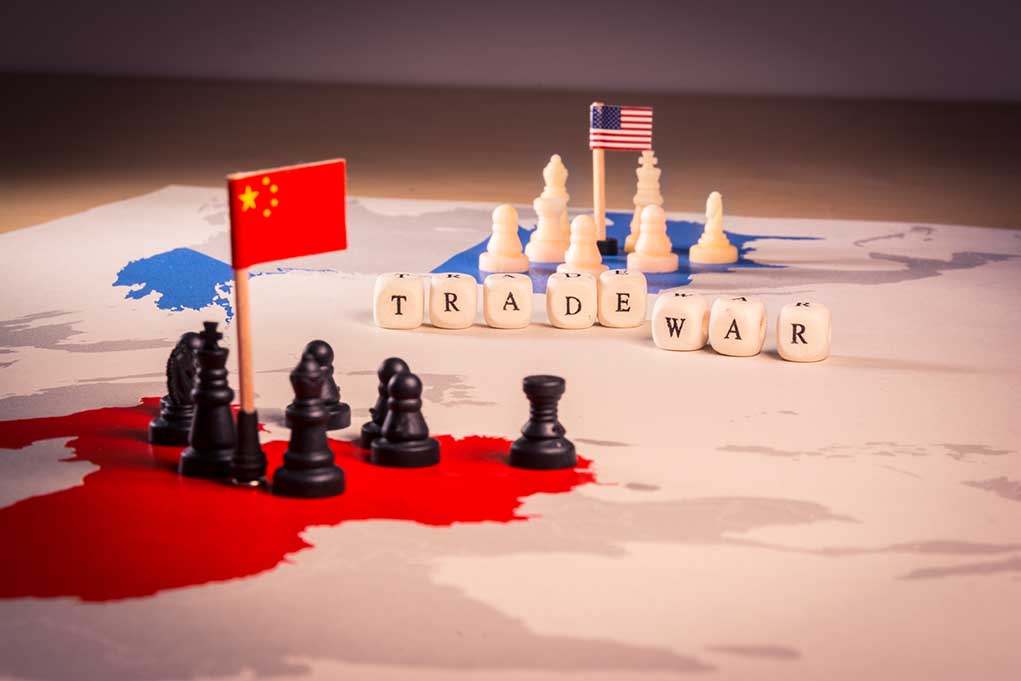
China’s retaliatory tariffs against the United States took effect on Monday, escalating the trade war between the world’s two largest economies.
Key Takeaways
- China imposed retaliatory tariffs on $14 billion worth of U.S. goods, including a 15% tax on coal and LNG, and a 10% tariff on crude oil and other products.
- The move comes in response to the U.S. imposing a 10% levy on all Chinese products, with Trump planning a 25% tariff on steel and aluminum imports.
- China has also launched an anti-monopoly probe into Google and added PVH to its “unreliable entity” list, signaling a broader economic conflict.
- Experts suggest China is better prepared for trade disputes now, with improved technology capabilities and diversified trade relationships.
- The ongoing trade war could have significant impacts on global supply chains and consumer prices in both countries.
Escalating Trade Tensions
Beijing’s retaliatory tariffs on $14 billion worth of American goods have gone into effect, as of Monday, Feb. 10. The tariffs come on the heels of President Trump’s announcement of a 10% levy on all Chinese products. Trump has also since indicated that he plans to increase tariffs on steel and aluminum imports to 25%. The tit-for-tat measures have raised concerns about the stability of global trade and the potential economic fallout for both nations.
China’s new tariffs target key U.S. exports, including a 15% tax on coal and liquefied natural gas, and a 10% tariff on American crude oil, agricultural machinery, and large-engine cars. These strategic choices aim to pressure U.S. industries and potentially influence domestic politics. However, the impact on U.S. exports may be limited, as China currently imports only a small percentage of these goods from America.
China’s tit-for-tat tariffs on US take effect https://t.co/XeAhiSVHt3
— KBC English Service (@kbcenglish) February 10, 2025
Beyond Tariffs: Expanding Economic Conflict
The trade dispute has expanded beyond mere tariffs, with China taking additional measures to assert its economic power. Beijing has recently launched an anti-monopoly probe into Google, potentially threatening the tech giant’s operations in China. Furthermore, the Chinese Commerce Ministry has placed PVH Group and Illumina on an “unreliable entities” list, which could bar them from China-related activities. These moves signal China’s willingness to use regulatory tools to pressure U.S. companies and influence their stance on trade relations.
“China is much better prepared [than during Trump’s first term],” says Scott Kennedy of the Center for Strategic and International Studies. “Although their economy cyclically has slowed down quite a bit, their technology capabilities are a lot greater than they were before and they have diversified their trade and investment with others.”
In a further escalation, China has imposed export controls on 25 rare metals crucial for electronics and military equipment. This move could significantly impact global supply chains, particularly in high-tech industries where these materials are essential. The U.S. and its allies may need to seek alternative sources or develop substitutes, potentially driving up costs and spurring innovation in materials science.
International Response and WTO Involvement
China has not limited its response to bilateral actions. The country filed a complaint with the World Trade Organization (WTO) regarding the U.S. tariffs, initiating a 60-day resolution period. However, experts doubt China’s chances of winning this dispute, given the current dysfunction of the WTO’s appeals court due to blocked appointments of judges. This situation highlights the broader challenges facing the global trade system and the limitations of existing mechanisms for resolving international trade conflicts.
The trade war’s impact extends beyond China and the U.S., affecting global markets and supply chains. Other major economies, including the European Union, Canada, and Mexico, have been caught in the crossfire. While the Biden administration resolved some tariff issues with the EU, tensions remain high with other trading partners. Trump’s proposal for reciprocal tariffs and criticism of EU trade practices suggest that the trade conflict could expand further.
The long-term consequences of this trade dispute could reshape global supply chains, encourage the development of alternative technologies, and potentially alter the balance of economic power between the world’s two largest economies.
Sources
- China’s tit-for-tat tariffs on US take effect
- Chinese tariffs to take effect, ratcheting up trade war with U.S.
- China counters with tariffs on US products. It will also investigate Google












